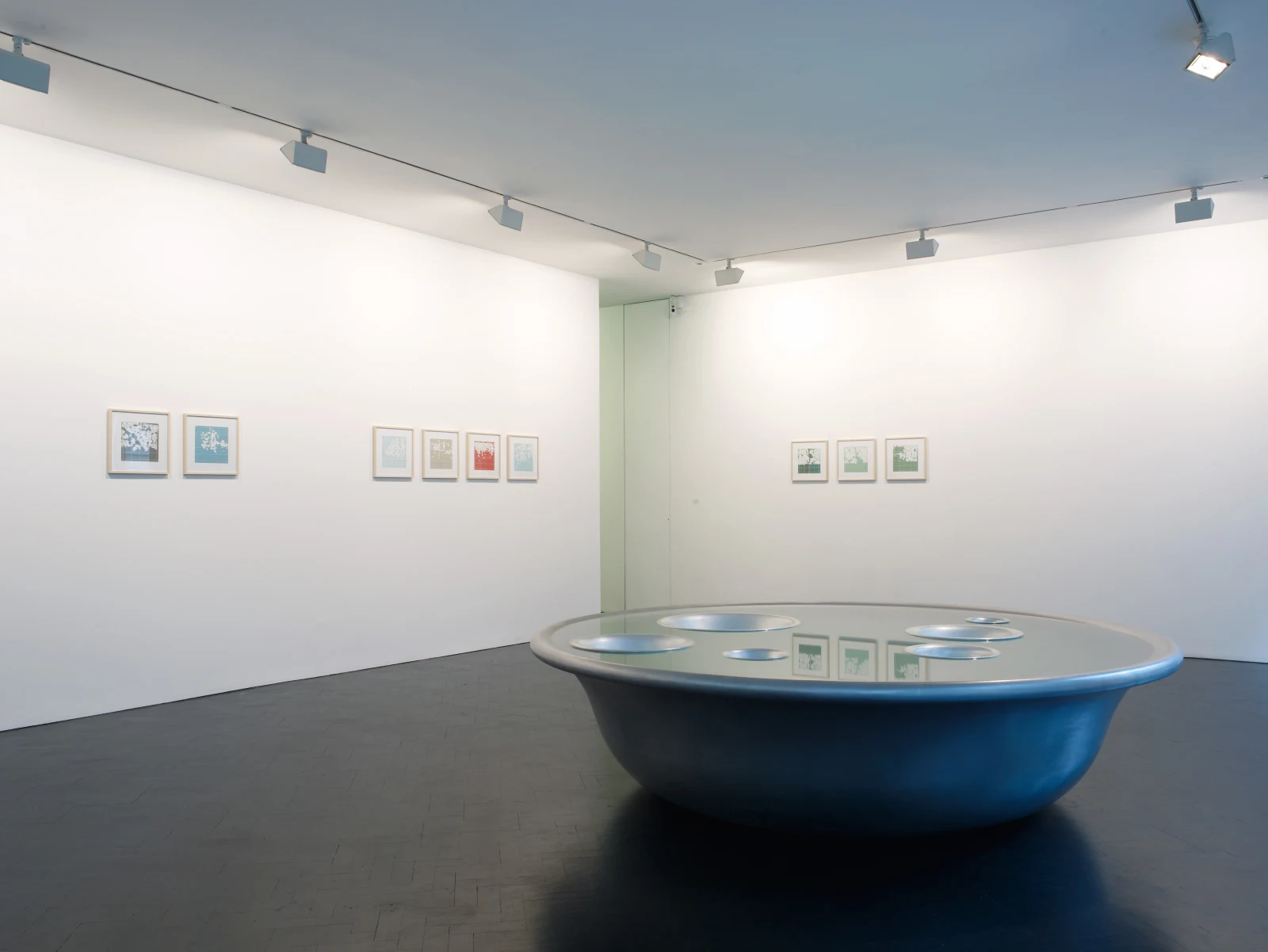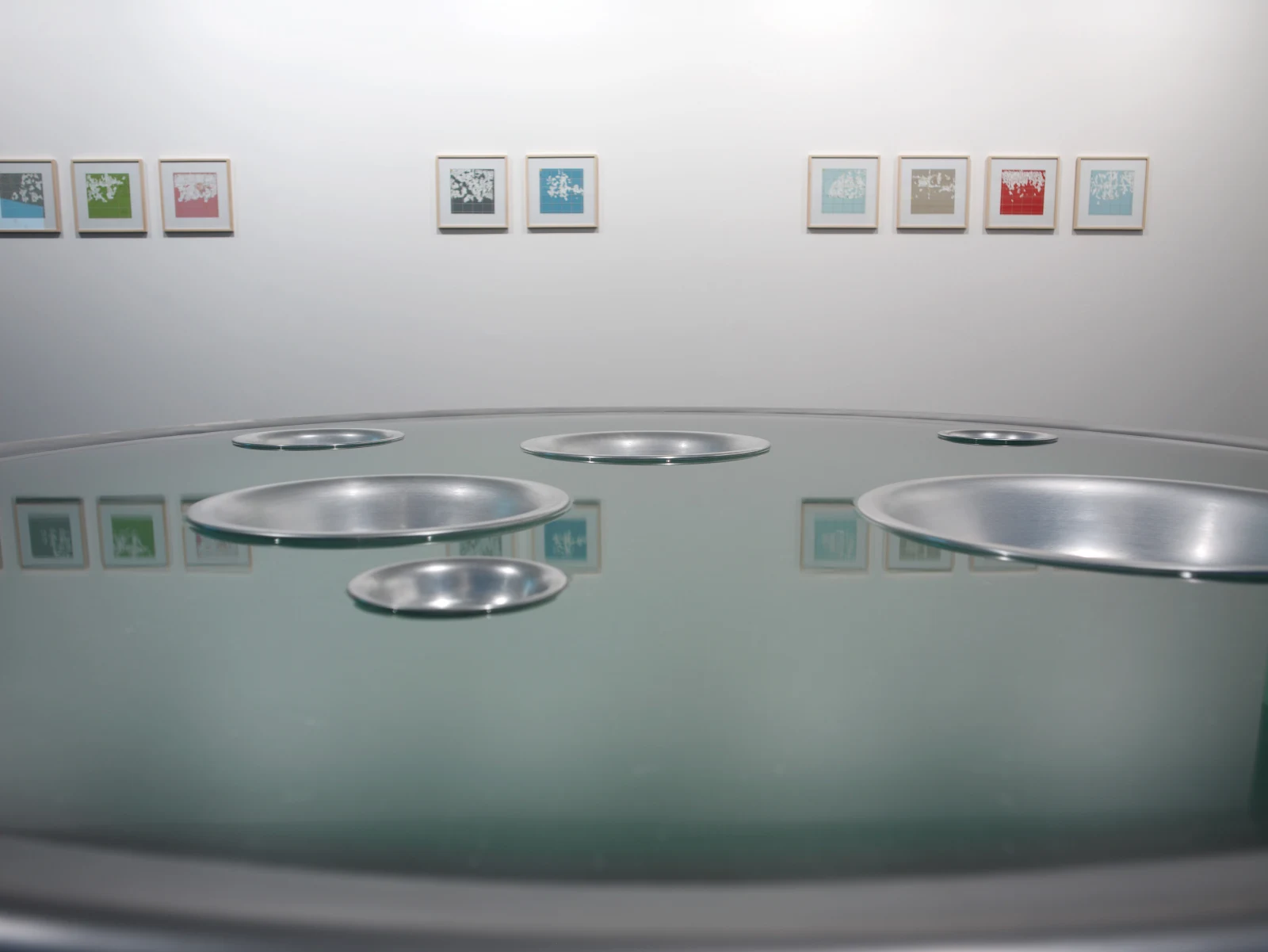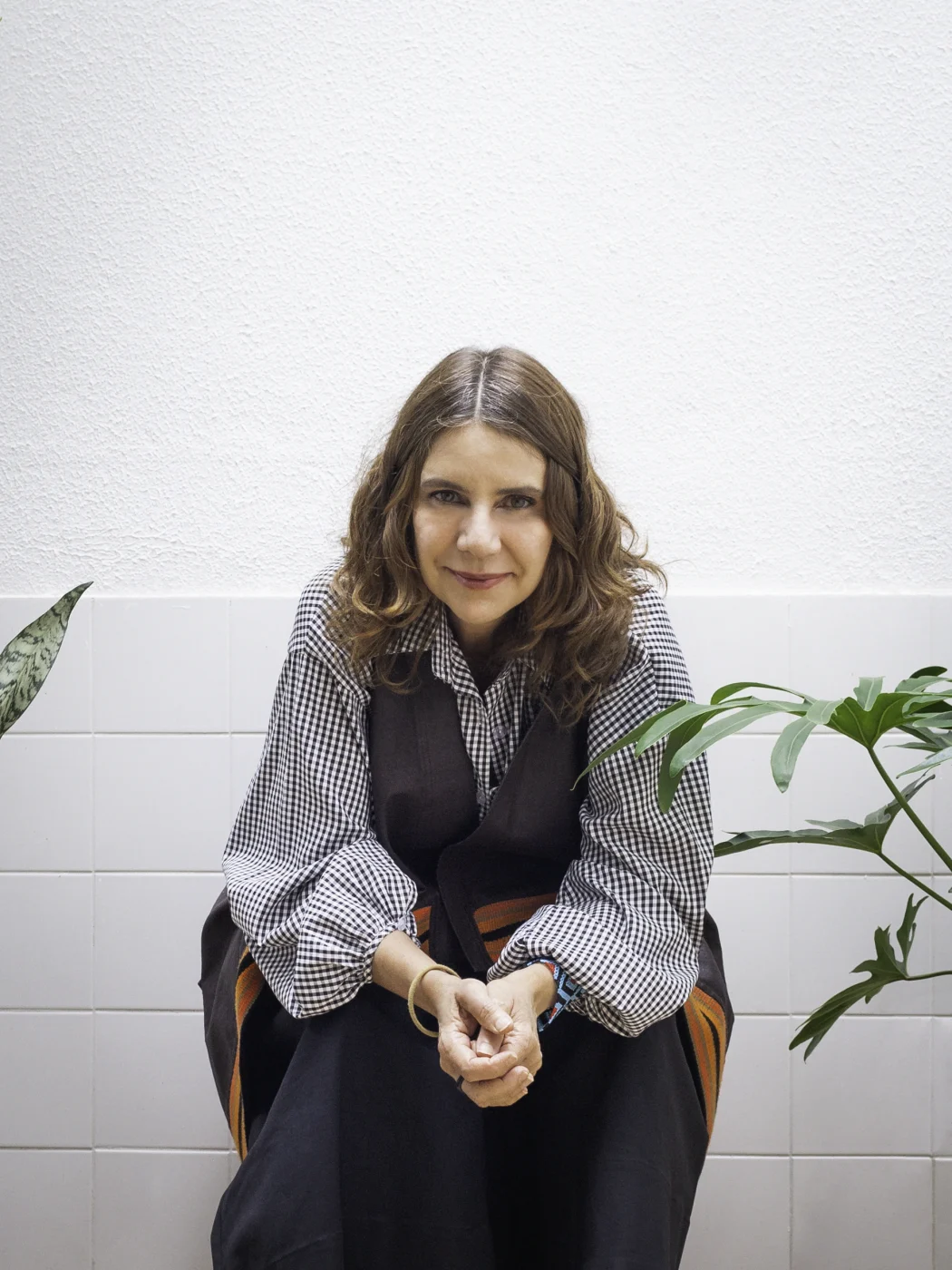
Rivane Neuenschwander
Overview
Here, Neuenschwander’s vocabulary takes on a new significance in the context of heightened attention to the effects and immediacy of climate change.
The natural world has always been at the heart of Rivane Neuenschwander’s work. Exploring nature’s hidden and often chaotic logic, Neuenschwander has created a diverse and intimate body of work mapping and charting this evolving terrain. In her fourth exhibition at Stephen Friedman Gallery, the artist presents new works including a large-scale installation, paintings, sculpture and film. This series of related works navigates and explores a multitude of topologies.
Continent-Cloud (2007) is an installation occupying the entire back gallery. Its minimal presence becomes apparent when setting foot in its environment. Here, the changing forms of a cloudscape are played out discreetly in the ceiling. Trapped in a suspended ceiling, a dynamic mass accumulates and dissolves into a shifting cycle of solid forms – islands, continents and archipelagos.
The natural world has always been at the heart of Rivane Neuenschwander’s work. Exploring nature’s hidden and often chaotic logic, Neuenschwander has created a diverse and intimate body of work mapping and charting this evolving terrain. In her fourth exhibition at Stephen Friedman Gallery, the artist presents new works including a large-scale installation, paintings, sculpture and film. This series of related works navigates and explores a multitude of topologies.
Continent-Cloud (2007) is an installation occupying the entire back gallery. Its minimal presence becomes apparent when setting foot in its environment. Here, the changing forms of a cloudscape are played out discreetly in the ceiling. Trapped in a suspended ceiling, a dynamic mass accumulates and dissolves into a shifting cycle of solid forms – islands, continents and archipelagos.
Rain Maps (2008) is a series of fourteen equally sized maps that were exposed to the torrential downpours of Brazil’s rainy season. The weather system has left its mark on the surface of the paper, diluting inks, smudging boundaries and dissolving landmasses to create unique and uncharted terrain. A humanist desire to create order is reintroduced by the artist imposing a grid over this ravaged territory. The remains of the map are put back in place, before a deluge of painted colour sweeps in and floods the rivers and valleys on the damaged surface.
By contrast, Continentals (2008) is more melancholy in tone. The sense of isolation and loneliness is suggested in the work’s title and refers to geological formation of islands born out of fragmentation or erosion. Here, an enormous aluminium basin is filled with cloudy water and floating within are several smaller, empty basins. The constellation of small basins, each its own island, moves in response to the shifting seas that are contained in the larger basin. The islands are defined by the emptiness of the basins, articulating a lack of symbolic or physical boundaries.
Contingent (2008) recalls the didactic videos screened by natural history museums. Using time- lapse photography, the film deconstructs the formation of the continents by allowing nature’s willful course to unfold. A map of the world, rendered in honey, is gradually consumed by an army of tiny ants. Landmasses shrink to islands, isolated from their previously contiguous bodies. The whole is reduced to parts, and the system of the seven continents is reformed into a strange new alignment.
In Neuenschwander’s world, elements literally ingest one another. This process suggests a continual redistribution of form where assimilation and corruption shape the work. Here, Neuenschwander’s vocabulary takes on a new significance in the context of heightened attention to the effects and immediacy of climate change.
Rivane Neuenschwander lives and works in Belo Horizonte, Brazil. In 2008, Neuenschwander will present a solo exhibition at the South London Gallery, London. Her work will also be included in 'Life on Mars,' 55th Carnegie International, Carnegie Museum of Art, Pittsburgh, PA, in May 2008. In the spring of 2009, Neuenschwander will present a solo show at the New Museum, New York, NY. Recent solo exhibitions include St Louis Art Museum, St Louis, MO (2004); Palais de Tokyo, Paris, France (2003); Walker Arts Center, Minneapolis, MN (2002) and Portikus, Frankfurt, Germany (2001). Recent group exhibitions include 'Comic Abstraction: Image-Breaking, Image- Making,' Museum of Modern Art, New York, NY (2007); 'Panorama da Arte Brasileira,' Museu de Arte Moderna de São Paulo, São Paulo, Brazil (2007); ‘Tropicalia,’ Barbican Art Centre, London, touring (2006); and 'Always a Little Further,' 51st Biennale di Venezia, Venice, Italy (2005). Her work is included in the collections of Tate Modern, London, and the Museum of Modern Art, New York.
Here, Neuenschwander’s vocabulary takes on a new significance in the context of heightened attention to the effects and immediacy of climate change.
Installation Views





